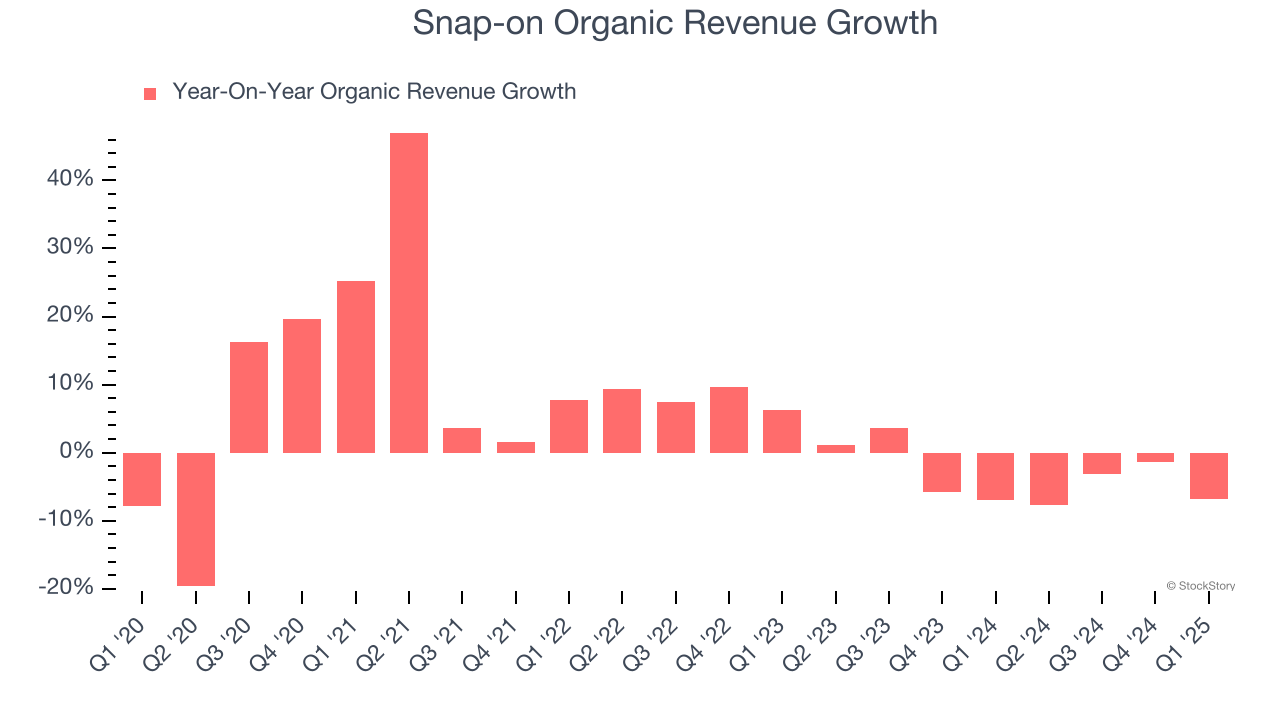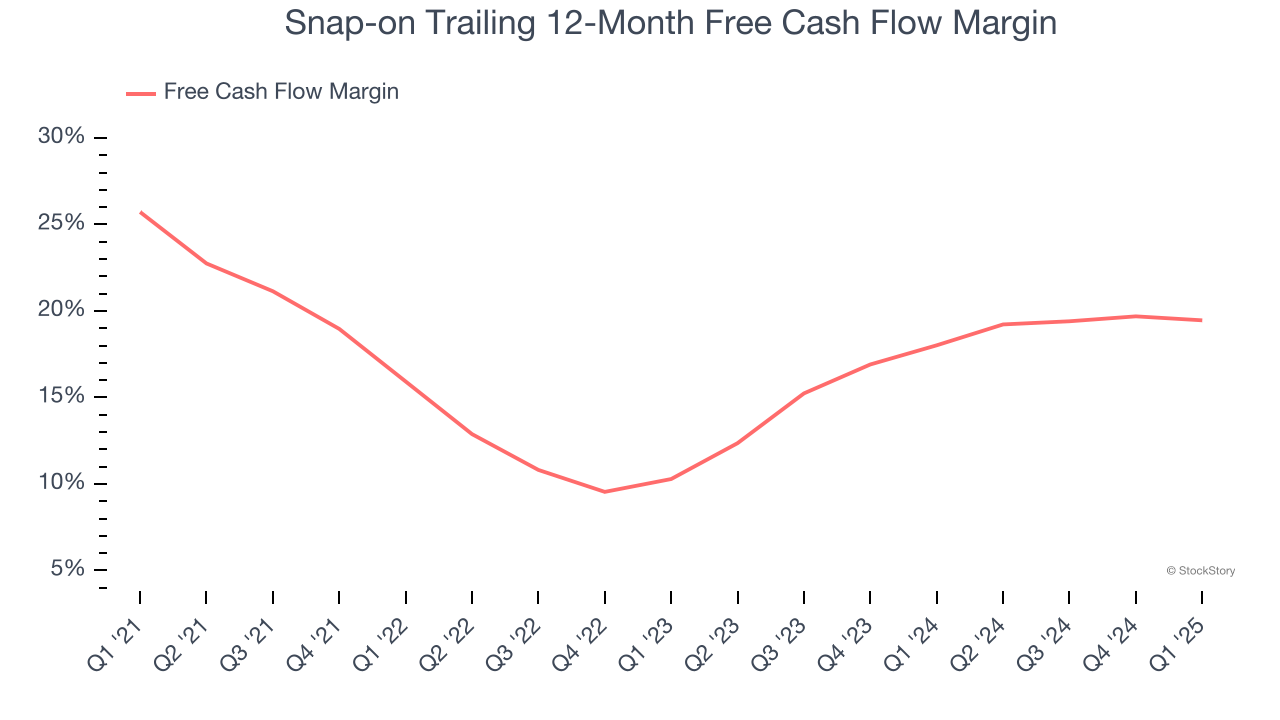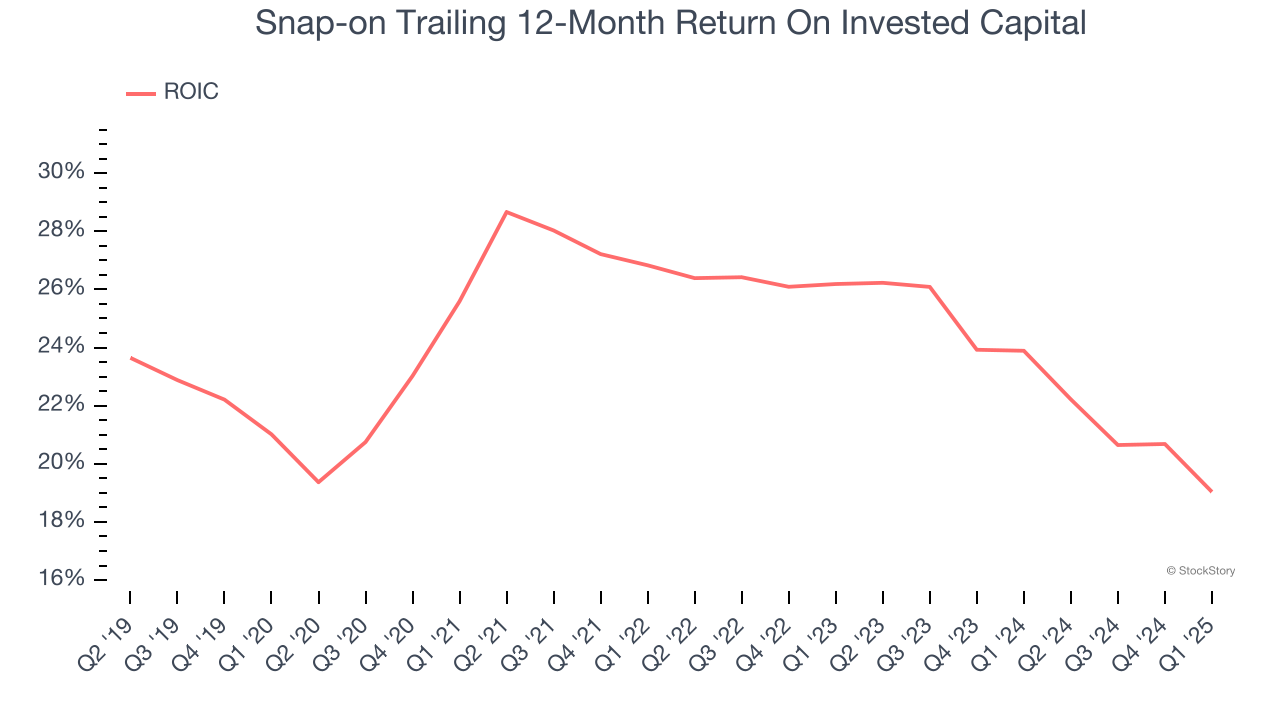
Although the S&P 500 is down 3.6% over the past six months, Snap-on’s stock price has fallen further to $319.29, losing shareholders 14% of their capital. This was partly due to its softer quarterly results and may have investors wondering how to approach the situation.
Is there a buying opportunity in Snap-on, or does it present a risk to your portfolio? Get the full breakdown from our expert analysts, it’s free.
Why Is Snap-on Not Exciting?
Even though the stock has become cheaper, we're sitting this one out for now. Here are three reasons why there are better opportunities than SNA and a stock we'd rather own.
1. Core Business Falling Behind as Demand Declines
We can better understand Professional Tools and Equipment companies by analyzing their organic revenue. This metric gives visibility into Snap-on’s core business because it excludes one-time events such as mergers, acquisitions, and divestitures along with foreign currency fluctuations - non-fundamental factors that can manipulate the income statement.
Over the last two years, Snap-on’s organic revenue averaged 3.4% year-on-year declines. This performance was underwhelming and implies it may need to improve its products, pricing, or go-to-market strategy. It also suggests Snap-on might have to lean into acquisitions to grow, which isn’t ideal because M&A can be expensive and risky (integrations often disrupt focus). 
2. Free Cash Flow Margin Dropping
Free cash flow isn't a prominently featured metric in company financials and earnings releases, but we think it's telling because it accounts for all operating and capital expenses, making it tough to manipulate. Cash is king.
As you can see below, Snap-on’s margin dropped by 6.3 percentage points over the last five years. If its declines continue, it could signal increasing investment needs and capital intensity. Snap-on’s free cash flow margin for the trailing 12 months was 19.5%.

3. New Investments Fail to Bear Fruit as ROIC Declines
A company’s ROIC, or return on invested capital, shows how much operating profit it makes compared to the money it has raised (debt and equity).
We like to invest in businesses with high returns, but the trend in a company’s ROIC is what often surprises the market and moves the stock price. Over the last few years, Snap-on’s ROIC averaged 4.7 percentage point decreases each year. We like what management has done in the past, but its declining returns are perhaps a symptom of fewer profitable growth opportunities.

Final Judgment
Snap-on isn’t a terrible business, but it doesn’t pass our bar. Following the recent decline, the stock trades at 15.9× forward P/E (or $319.29 per share). Investors with a higher risk tolerance might like the company, but we think the potential downside is too great. We're pretty confident there are more exciting stocks to buy at the moment. Let us point you toward a top digital advertising platform riding the creator economy.
Stocks We Would Buy Instead of Snap-on
The market surged in 2024 and reached record highs after Donald Trump’s presidential victory in November, but questions about new economic policies are adding much uncertainty for 2025.
While the crowd speculates what might happen next, we’re homing in on the companies that can succeed regardless of the political or macroeconomic environment. Put yourself in the driver’s seat and build a durable portfolio by checking out our Top 9 Market-Beating Stocks. This is a curated list of our High Quality stocks that have generated a market-beating return of 176% over the last five years.
Stocks that made our list in 2020 include now familiar names such as Nvidia (+1,545% between March 2020 and March 2025) as well as under-the-radar businesses like the once-micro-cap company Tecnoglass (+1,754% five-year return). Find your next big winner with StockStory today.

